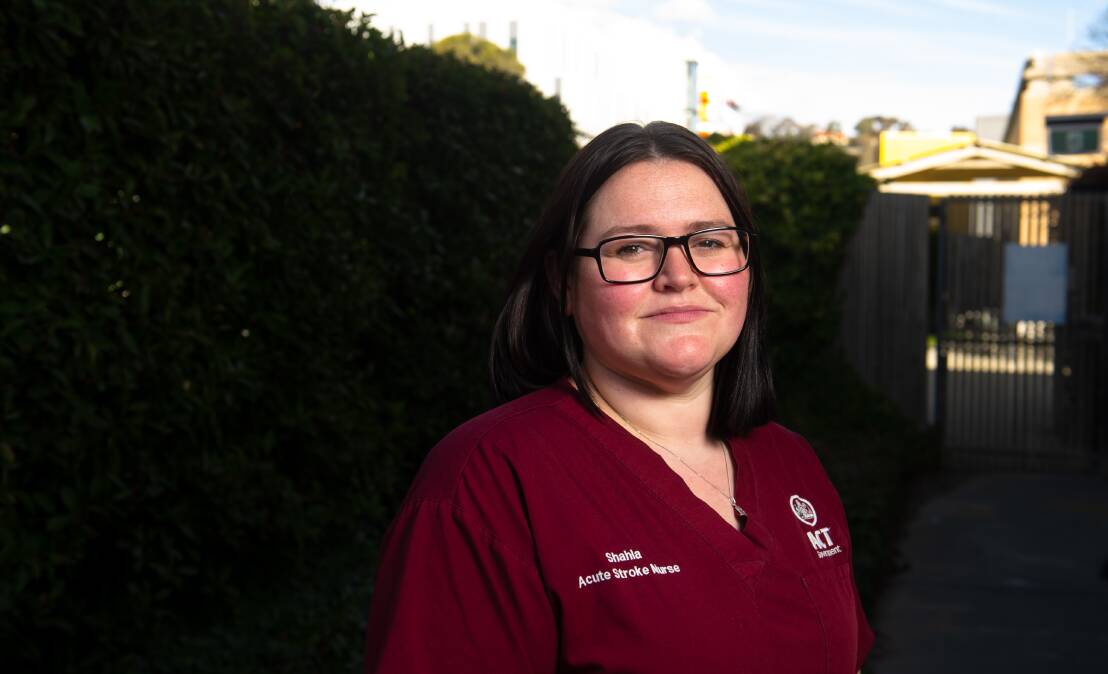Canberrans are being urged to keep watch for stroke symptoms with authorities saying those in the capital often present too late after developing symptoms.
Over recent years, the territory's capacity to treat strokes has been boosted at the comprehensive stroke centre at Canberra Hospital.
One of the treatments available at the hospital around the clock has been described as one of "the most powerful interventions" in modern medicine.
About two years ago the centre started offering endovascular clot retrieval 24 hours a day.
The procedure involves the removal of large blood clots by inserting a tiny tube into the blocked blood vessel, normally via an artery in the leg, and is fed up through the body into the brain. The clot is then captured by a wire stent or suction device.
Canberra Hospital stroke nurse navigator Shahla Cowans said they have been able to complete about 65 procedures annually.
Prior to the service being introduced in Canberra, patients would have to be sent via air to Sydney to receive the procedure, which could take an additional three to four hours.

"Now that we can do it on our own doorstep it means within an hour or two... for every minute treatment is delayed 1.9 million neurons can be affected so that can result in significant disability," Mrs Cowans said.
But time is critical and Mrs Cowans warned people to not ignore stroke symptoms.
"Unfortunately in Canberra you have a population that sometimes presents to the hospital quite a little bit late so quite frequently patients go to bed to try and sleep off symptoms, which unfortunately you just cannot do, the symptoms are going to be there when you wake up," she said.
"So by the time they do present, the treatment windows are much tighter so we need to work incredibly fast to get the imaging done as fast as possible to see what treatment we can offer to try and prevent disability."
The comprehensive stroke centre at Canberra Hospital is one of 11 in Australia and it is one of the only centres in Australia to have dedicated 24/7 stroke nurses.
Mrs Cowans said this meant no matter what time a person showed up at the emergency department, nurses were able to activate a "code stroke" and get immediate assistance.
"Within two or three minutes a stroke nurse can be downstairs in the emergency department to assess the patient and get the imaging, which is extremely time critical, completed as fast as possible," she said.
Stroke Foundation national manager of stroke treatment Kelvin Hill said there were a lot of misconceptions surrounding stroke, primarily, that it only affected old people.
He said about one-quarter of people who have a stroke are under the age of 65.
"It actually affects a lot of people and people think it's an old persons disease and there's not much we can do about it but that's actually not true, things have come a long way in the last 20 years," he said.
Mr Hill said weakness was the most common sign of stroke, which presents in the face, arms and legs. Speech could also be affected.
He pointed to the F.A.S.T acronym as signs to test whether someone was having a stroke. This means if someone has a drooped face, their arms can't be raised and they have slurred speech then it was important they get timely medical assistance.
Mr Hill said the endovascular clot retrieval needed to be done within the first 24 hours of having symptoms in order for it to work.
"It's one of the most powerful interventions we have in modern medicine now but the trick is that only has a defined time period it's within the first 24 hours and you've got to get to the specialist centres like Canberra Hospital that have access to those specialists or consultants that can do that," he said.
We've made it a whole lot easier for you to have your say. Our new comment platform requires only one log-in to access articles and to join the discussion on The Canberra Times website. Find out how to register so you can enjoy civil, friendly and engaging discussions. See our moderation policy here.







